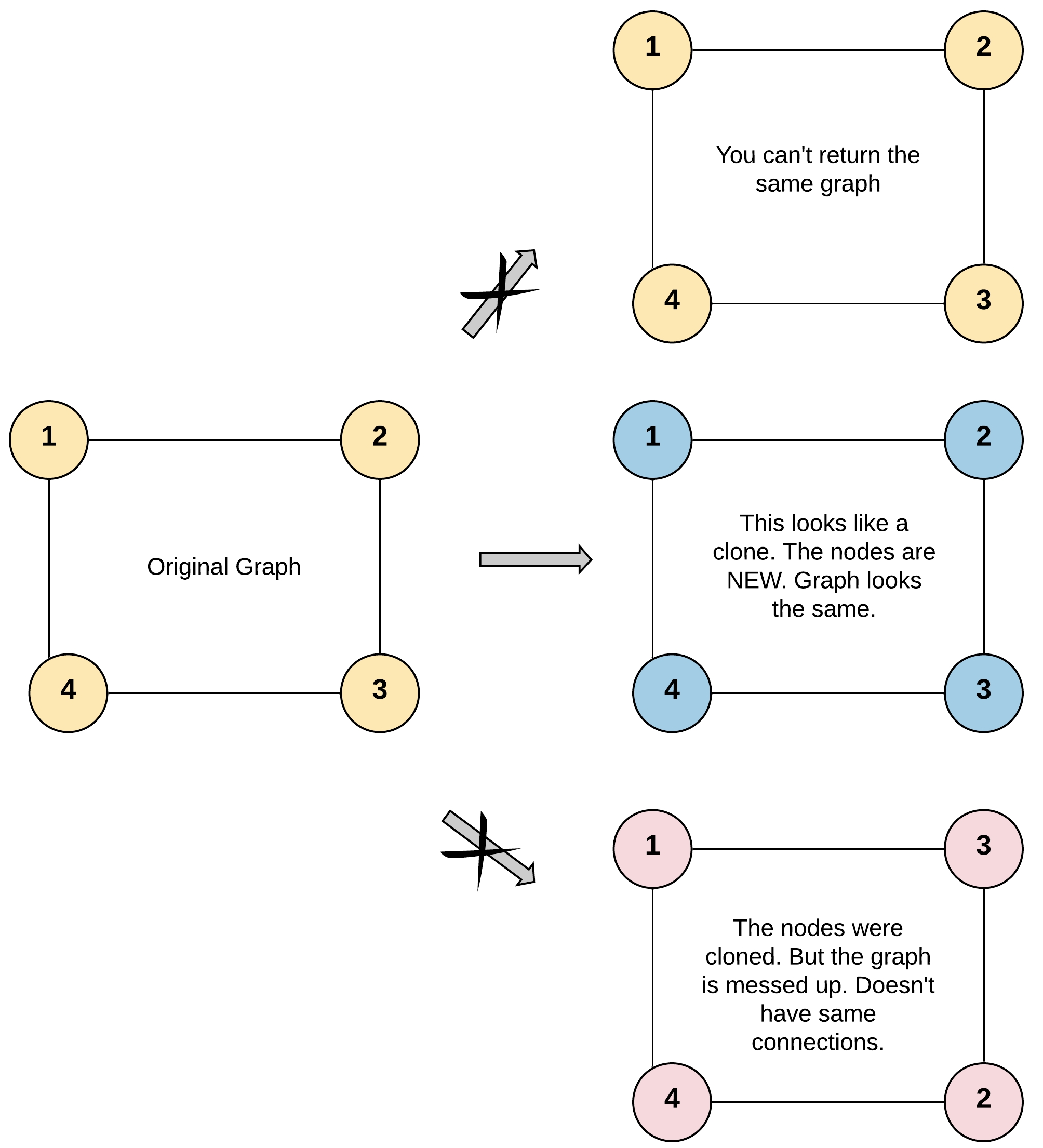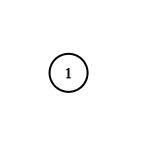Clone Graph
Given a reference of a node in a connected undirected graph.
Return a deep copy (clone) of the graph.
Each node in the graph contains a val (int) and a list (List[Node]) of its neighbors.
class Node {
public int val;
public List<Node> neighbors;
}Test case format:
For simplicity sake, each node's value is the same as the node's index (1-indexed). For example, the first node with val = 1, the second node with val = 2, and so on. The graph is represented in the test case using an adjacency list.
Adjacency list is a collection of unordered lists used to represent a finite graph. Each list describes the set of neighbors of a node in the graph.
The given node will always be the first node with val = 1. You must return the copy of the given node as a reference to the cloned graph.
Example 1:

Input: adjList = [[2,4],[1,3],[2,4],[1,3]]
Output: [[2,4],[1,3],[2,4],[1,3]]
Explanation: There are 4 nodes in the graph.
1st node (val = 1)'s neighbors are 2nd node (val = 2) and 4th node (val = 4).
2nd node (val = 2)'s neighbors are 1st node (val = 1) and 3rd node (val = 3).
3rd node (val = 3)'s neighbors are 2nd node (val = 2) and 4th node (val = 4).
4th node (val = 4)'s neighbors are 1st node (val = 1) and 3rd node (val = 3).Example 2:

Input: adjList = [[]]
Output: [[]]
Explanation: Note that the input contains one empty list. The graph consists of only one node with val = 1 and it does not have any neighbors.Example 3:
Input: adjList = []
Output: []
Explanation: This an empty graph, it does not have any nodes.Example 4:

Input: adjList = [[2],[1]]
Output: [[2],[1]]Constraints:
1 <= Node.val <= 100Node.valis unique for each node.Number of Nodes will not exceed 100.
There is no repeated edges and no self-loops in the graph.
The Graph is connected and all nodes can be visited starting from the given node.
/*
// Definition for a Node.
class Node {
public int val;
public List<Node> neighbors;
public Node() {
val = 0;
neighbors = new ArrayList<Node>();
}
public Node(int _val) {
val = _val;
neighbors = new ArrayList<Node>();
}
public Node(int _val, ArrayList<Node> _neighbors) {
val = _val;
neighbors = _neighbors;
}
}
*/
public class Solution {
private HashMap<Integer, Node> map = new HashMap<>();
public Node cloneGraph(Node node) {
return clone(node);
}
private Node clone(Node node) {
if (node == null)
return null;
if (map.containsKey(node.val)) {
return map.get(node.val);
}
Node clone = new Node(node.val);
map.put(clone.val, clone);
for (Node neighbor : node.neighbors) {
clone.neighbors.add(clone(neighbor));
}
return clone;
}
}Last updated